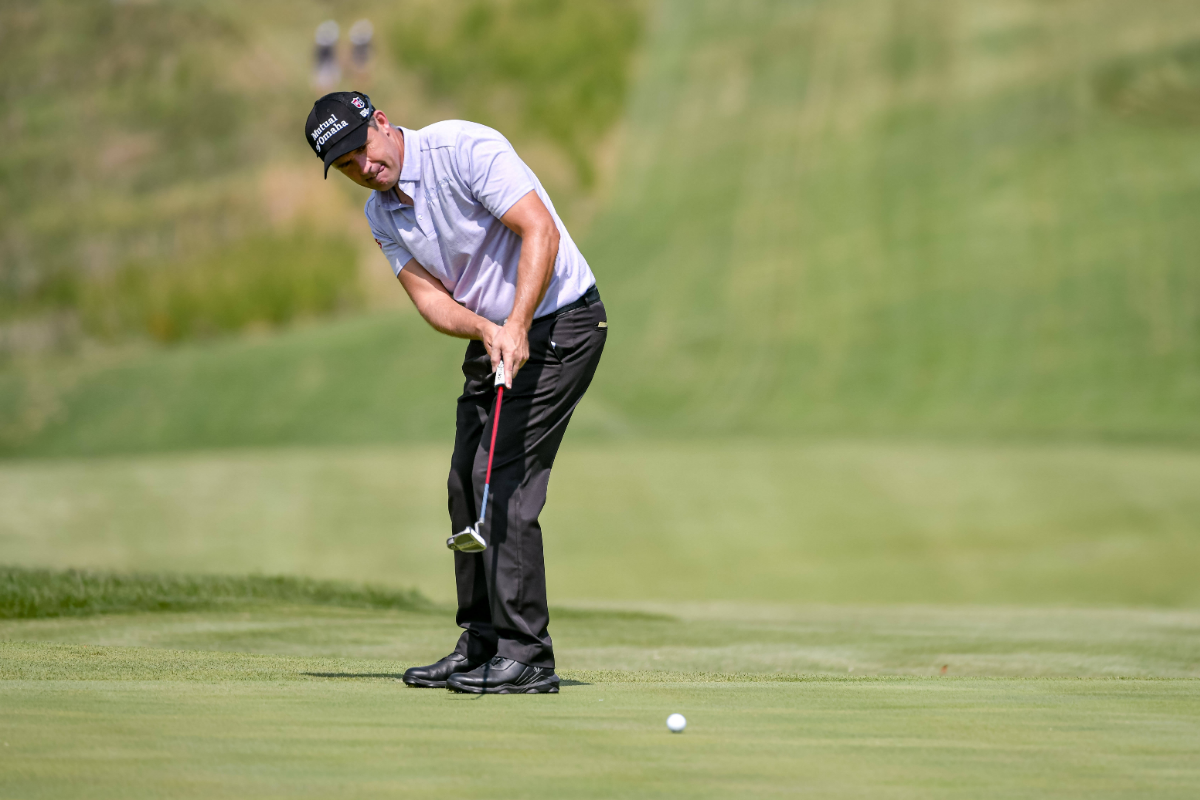

Let’s be honest. Ripping a 300-yard drive feels amazing. But you know what feels even better? Draining a 10-footer to save par or even steal a birdie. Yet too many golfers treat putting like it matters the least when it can actually save you from adding multiple bogeys on your scorecard. And here’s the hard truth — putting might look simple, but it’s one of the most technical parts of the game. Sure, on some days you could hole putts easily, but on most days, bad technique or a poor stroke would result in 3-putts that can haunt you for days.
Watch What’s Trending Now!
So, if you’re tired of three-putts or those nasty 3-foot misses, it’s time to give putting the attention it deserves. These tips from Hall of Famers can help you shave strokes off your scorecard, sink more putts with confidence, and finally tame the greens.
Top Stories
LIV Golf Issues Statement as Pro Announces Shock Retirement After Getting Relegated

Praise Pours In for Annika Sörenstam After Her Gesture Toward Matt Kuchar and Son Despite PNC Loss

Amanda Balionis Receives Wake-Up Call That She Didn’t Expect to Face at 39

Annika Sorenstam Bursts Into Tears as Son Makes Bold Vow During PNC Championship

Johnson Wagner Admits Guilt for Making Jordan Spieth Miss Out on Rare PGA Tour Record

ADVERTISEMENT
1. Get the Ball Position Right for a Pure Roll
Ball position is one of the most overlooked fundamentals in putting, but it makes all the difference when it comes to consistency and roll. Jack Nicklaus, the 18-time major champion, says that keeping the ball in line with the instep of his left foot helps the putter strike the ball with a slightly ascending motion. This helps in producing a sort of upward strike on the ball and reduces skid while adding topspin, leading to a smoother, more accurate roll.
Padraig Harrington is even more specific. He says, “The ball position should be one inch ahead of your sternum,” as it would help avoid the putt being bumpy, and the ball would go exactly on the line intended. This can be a game-changer for anyone looking to improve green speed and control, as Harrington highlights. Correct ball position sets up everything else in the stroke. So, if your putts are inconsistent, try adjusting the ball slightly forward in your stance and watch how it changes the roll.
ADVERTISEMENT
2. Work on keeping the lower body quiet
No matter how good your green reading is, a wobbly or inconsistent stroke will cost you strokes. The best putters, like Nicklaus, focus on minimal movement during the stroke and let the shoulders and arms do all the work. Harrington specifically emphasizes a stroke driven by rocking the shoulders and arms like a pendulum without hinging the wrists and keeping the lower body stable. — “I don’t want any hip movement. I don’t want any head movement.”
Harrington insists on locking the hips and keeping the head still during the stroke. This stability prevents unwanted movements that can disrupt the putter’s path and affect accuracy. By isolating the shoulder and rib cage motion, the stroke becomes more consistent and repeatable. He also emphasizes on letting the arms hang in front of the sternum, allowing them to fall naturally without creating too much tension in your shoulders. This will also help you feel the weight of the putter head moving naturally without creating a forceful stroke. And as Jack Nicklaus always says, “Feel is a lot more important than direction in putting.”
ADVERTISEMENT
3. Understand and Embrace the Natural Arc
Once you learn how to feel the putter and stroke it rather than simply whacking it, you’d realise that the putting stroke has a slight arc to it. It never moves straight back or straight forward. And Harrington emphasizes the same — your putting stroke naturally moves on a slight arc. He explains that forcing a straight path can create tension and inconsistency. Instead, allowing the putter to move on a natural arc, which matches your body’s rotation and helps maintain square contact through impact.
View this post on Instagram
ADVERTISEMENT
Jack Nicklaus’s piston stroke, where the left hand controls the face, also supports this idea. This grip helps in letting the putterhead swing freely through the stroke (with a solid follow-through), and the stroke stays balanced and rhythmic without the natural getting disrupted. The arc also helps with better distance control and keeps the face square for longer, allowing the putts to start on line.
4. Keep Your Head Still and Eyes Focused
If there’s one thing nearly every Hall of Famer agrees on, it’s this — the quieter you keep your head, the better your putting stroke. And no part of the body betrays your stroke faster than your head. It’s one of the simplest tips in theory, but the hardest to execute under pressure. Gary Player said it best — “The hardest thing to do when putting is to keep your head still and try to see your putter hit a dimple on the ball.” It may sound silly, but it’s incredibly effective. Moving your head, even just a little, can throw off the entire stroke path and impact point. When your head shifts, your shoulders, arms, and hands often follow, resulting in pulled or pushed putts, mis-hits, and inconsistent roll.
ADVERTISEMENT
Gary Player’s advice is to pick a specific spot on the ball, or even a dimple, which helps lock your visual focus in place. It discourages you from peeking too early and helps ensure solid, centered contact. Fred Couples uses a similar mental trick with his “spot putting” method. After reading the putt and understanding the break, he shifts his focus to a specific spot on the green just before the hole, which becomes his focus point for the stroke, helping with alignment, stroke path, and confidence.
These putting tips come straight from Hall of Famers who have won majors, broken records, and proven their techniques under the toughest conditions in golf. Whether it’s Nicklaus’ emphasis on feel, Harrington’s precision setup, or Fred Couples’ visual targeting, the message is clear — improving your putting will make a lot of difference to your scores.
ADVERTISEMENT
ADVERTISEMENT
ADVERTISEMENT

